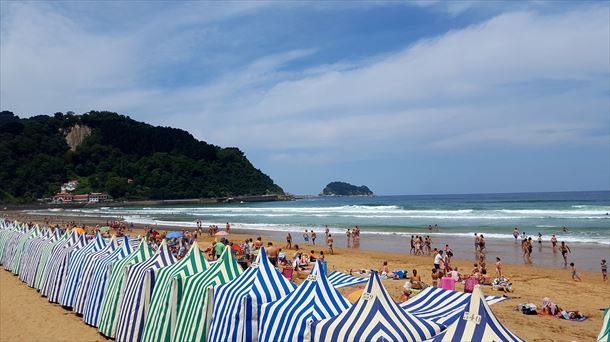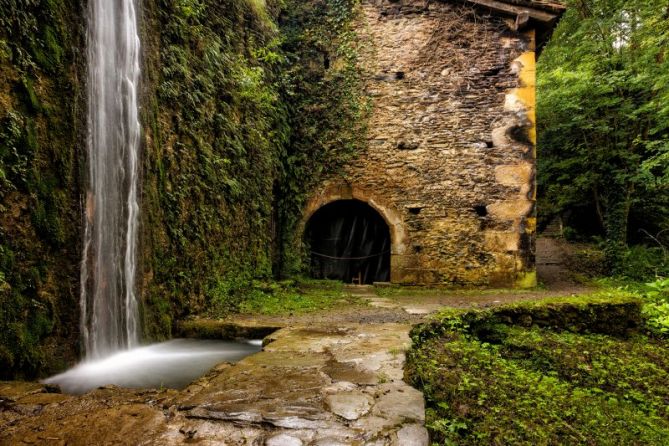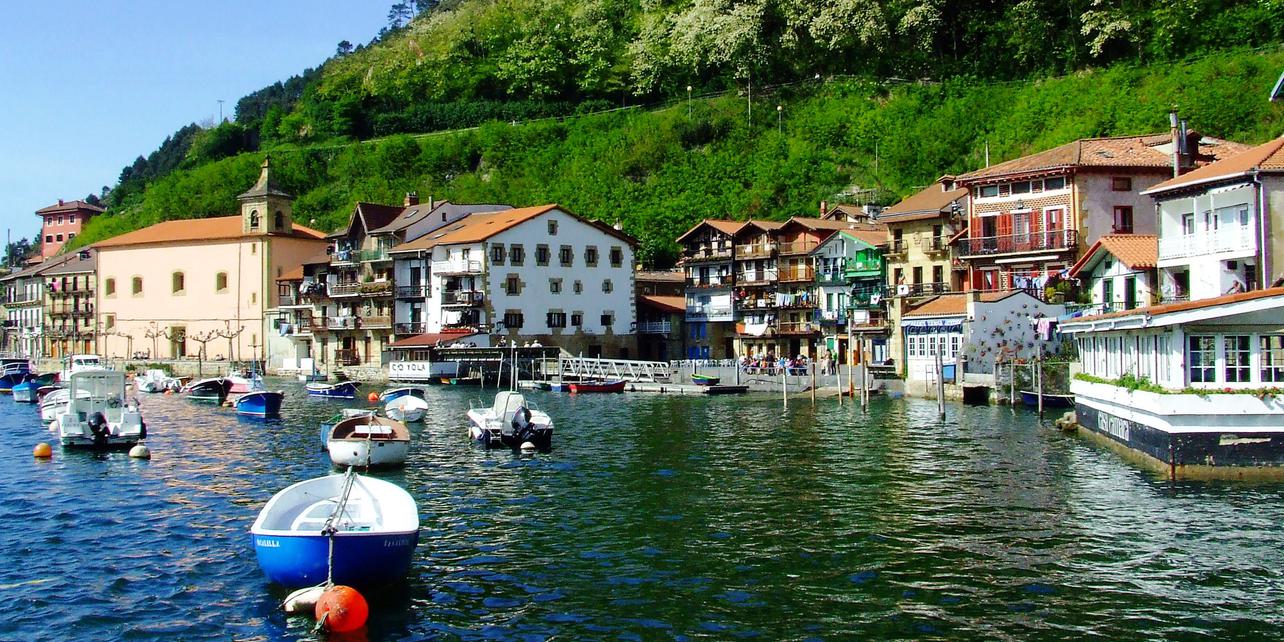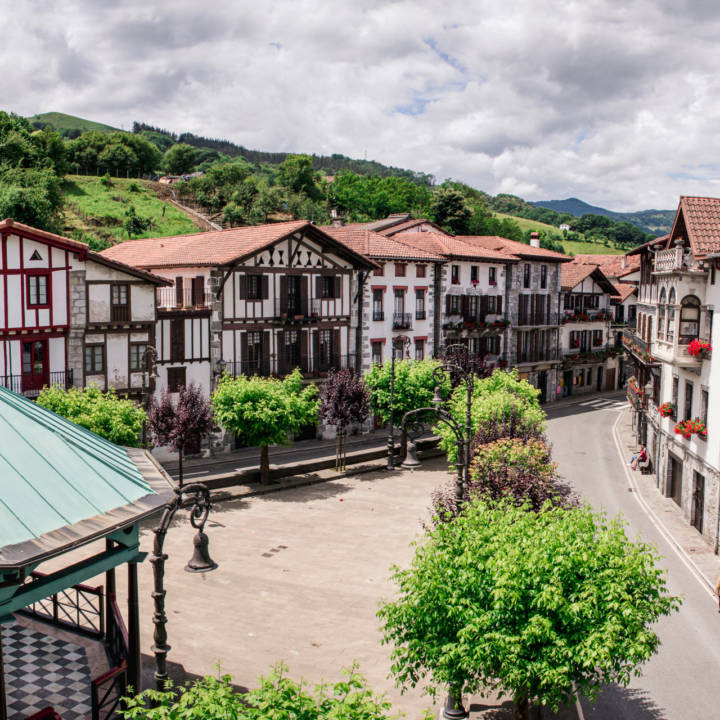What to visit less than 30 minutes away from San Sebastian
San Sebastian is a city with a lot to offer, with something for everyone. But its surroundings are no less so. If you’ve already seen everything in Donosti, or you feel like getting out of the capital of Gipuzkoa, we have a few suggestions less than 30 minutes from the centre of San Sebastian, both by public and private transport.
If you are going to travel by public transport and you are a group or a family, or you are planning to go on more than one trip, you can buy the MUGI card at tobacconists, it costs 5 euros and is already topped up with this money. It is very easy to top it up at tobacconists or at Kutxabank ATMs. This card can be used not only on buses in San Sebastian and Gipuzkoa, but also on all public transport in the Basque Autonomous Community, including the funiculars and metro in Bilbao, the trams in Bilbao and Vitoria and the Renfe commuter trains, so it might be a good idea to get your hands on one!
If, on the other hand, you are going to travel in a private vehicle, bear in mind that to get to any of these recommendations in less than 30 minutes it is necessary to go through a toll. If you want to save money, it will obviously take you longer to reach your destination.
And now, here are 10 places to visit less than 30 minutes away from San Sebastian.
Orio
Orio is a small coastal town known for its rowing team (the balconies of many houses are adorned with yellow flags for this reason). It has a nice promenade by the river Oria and a couple of very nice beaches. It can also be a starting point for hiking the Orio-Donostia route through the Igeldo mountain or following the Way if St James to Zarautz.
The easiest way to get there is obviously by car, but if we don’t have the possibility of having one, or our plan is to make a short excursion on foot to Donosti or Zarautz, the best way to get to Orio is the Euskotren train, better known as Topo (mole). The station in the Centre is called Amara and is located in Easo square, very close to the Cathedral of the Good Shepherd. The E1 Topo line (direction Matiko Bilbao or Zumaia) leaves every half hour (every hour on weekends and public holidays) and takes exactly 24 minutes to get to Orio. The complete timetable can be found here.
Zarautz
Zarautz is the town just after Orio on the coast and is well known for surfing and for the TV chef Karlos Arguiñano, who has his restaurant here. The beach of Zarautz is very long and makes for a nice walk. It is also very close to Getaria, a town that can be seen in the distance and is just 5 kilometres away. If you feel like it and have time, it might be a good idea to make the journey by the sea to this pretty fishing village.
To get to Zarautz you can of course take the car, although you will have to take into account that there is a toll to get here. You can also use the aforementioned Topo or the bus. The Topo is the same as the one to go to Orio, but in this case it takes 6 minutes longer to get here. In the case of the bus, you will have to take the UK10 bus to Zumaia, which leaves every hour from Libertad avenue, in the Centre (5 minutes before leaves from the bus station). The bus takes 30 minutes to get to Zarautz via the motorway and you have the complete timetable here (timetable in blue, in summer it can change).

Zarautz beach with the Mouse of Getaria in the background. Photo by Iñaki Zenitagoia.
Getaria
Getaria is a very pretty fishing village, very close to Zarautz. Famous for being the birthplace of Juan Sebastián Elcano and Cristobal Balenciaga (whose museum you can visit here), it is also known for its grilled fish and txakoli. Despite being a very small town it has great charm, and its “mouse” (the mound that juts out into the sea) has excellent views. Getaria is, without a doubt, one of the towns to visit in our province.
To get here quickly we can walk from Zarautz, as we have already mentioned, or we can also take a bus from Zarautz, as all the buses that pass through one also pass through the other. But if you are coming from San Sebastian, the quickest way, which takes less than 30 minutes, is by car, taking the Zarautz exit. As you can see, it is inevitable to see both villages at once, so visiting both can be a good way to spend a morning or an afternoon.
Pagoeta
Pagoeta is a very beautiful natural park, with a lot of routes to do on foot. Ideal for visiting with children, here you can find an old foundry, prehistoric remains such as dolmens and cave sites, children’s playgrounds and picnic tables. The Iturraran Interpretation Centre is a 30-minute drive from the Centre of San Sebastian and here you can get much more information about what to do in the park. There is also a huge botanical garden nearby and it is not uncommon to see animals such as cows and ponies of native breeds in the park. For more information don’t hesitate to visit their website here.

Agorregi foundry in Pagoeta. Photo by El Diario Vasco.
Chillida Leku
If you fancy something more cultural or you like art, a visit to the Chillida Leku museum might be a great idea. This centre dedicated to the life and work of the sculptor Eduardo Chillida is located in the grounds of a 16th century farmhouse between Donosti and Hernani.
It’s also very easy to get here, not just by car. The BU05 bus line leaves from Okendo Street every half hour (on public holidays, depending on the time of day, every hour, see the complete timetable here) and takes about 25 minutes to drop you off at the museum’s door. It couldn’t be easier.
Tolosa
Although we always recommend visiting the coastal towns, the truth is that the interior of Gipuzkoa is full of charming towns that are well worth a visit. This is the case of Tolosa. Tolosa is one of the most important towns in Gipuzkoa; for ten years, in fact, it was the capital of the province. Its historic centre is very pretty and its gastronomy (beans, rotisseries and sweets, in general) is well known, so it can be a good option to spend the day and see something different.
And to get to Tolosa we can of course take the car, which will take about 30 minutes. The Renfe train from San Sebastian station also takes 30 minutes (you can check the timetible here). As you can see, it doesn’t take long at all!
Pasaia
Pasajes, or Pasaia, is the largest port in the whole of the North. Situated in an extremely sheltered bay, it is divided into 4 quarters or districts, two of which are historic and very beautiful: San Pedro and San Juan, San Juan being probably the most beautiful of the two. In Pasajes San Pedro, as well as seeing the town, you can visit the Mater and Albaola museums. In Pasajes San Juan you can admire the colourful fishermen’s houses and walk almost to the end of the mouth of the bay. And in both you can enjoy excellent gastronomy.
To get here, either by car or by public transport, the quickest way is to go to Pasajes San Pedro. The E09 bus line leaves every 15 minutes (20 at weekends, the full timetable is available here) from the aforementioned Okendo street and arrives at its destination in just 15 minutes. Once in San Pedro, and after admiring the port from this side, you can cross to San Juan by one of the green motorboats that take you from one neighbourhood to the other. It’s only a 1-minute ride and is the easiest way to get to the other side.
If you want to go directly to San Juan, you can go by car, of course, or take the E01 bus from Gipuzkoa square. This bus leaves every 20 minutes (30 minutes on weekends, the full timetable is available here) and takes about 30 minutes to get to San Juan. You can also combine both options and go with one bus and come back with the other!

Pasajes San Juan. Photo by Sagardoaren Lurraldea.
Hondarribia
Hondarribia is the coastal town right on the border with France and one of the prettiest towns in the Basque Country. If you are going to spend several days in San Sebastian, it is almost a must-see. It is also a place where you can eat very well and it has a beach. As you can see, Hondarribi has it all!
It takes about the same time to get here by car as it does by bus. The E21 bus, which also leaves from Gipuzkoa square every hour on the hour (at midday it leaves a little later, see the full timetable here), reaches Hondarribia in about 25 minutes and drops you off both next to the old town and in the town centre.
Hendaya
Across the border, also on the coast, is Hendaye. Hendaye has a very long beach to stroll and enjoy, for example, surfing, and the Chateau D’Abaddie to visit.
And it is very easy to get here. By car from Donosti it takes a little longer than to Hondarribia. However, you can also take advantage if you are in Hondarribi and cross by motorboat, as in Pasajes. If you prefer to go directly to Hendaye, the aforementioned Topo will get you here in about 30 minutes, although in this case you will have to take the E2 line towards Hendaye, which leaves every 30 minutes from Amara (full timetable here).
Lesaka
Lesaka is a village in the north of Navarre, right on the border with Gipuzkoa, it is small and very pretty, and if you have seen the Baztan trilogy films it is very likely to ring a bell, as part of it was filmed here. Lesaka is also known for having its own Festival os San Fermín, which are almost as popular as those in Pamplona, at least among the young people of the Basque Country.
The easiest way to get to Lesaka is by car. It takes about 30 minutes from San Sebastián, although it does take a toll.

Lesaka. Photo by Bizibide.
